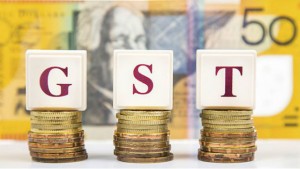Home » Commentary » Opinion » Not all roads need to lead to a bigger GST
· The Canberra Times
 Among the world’s federations, we are one of the best at talking about the flaws in our system but one of the worst at actually doing anything about them.
Among the world’s federations, we are one of the best at talking about the flaws in our system but one of the worst at actually doing anything about them.
Yet again, the subject has been reopened – this time by NSW Treasurer Dominic Perrottet in the form of the NSW Review of Federal Financial Relations. He deserves full points for trying, but the review’s discussion paper contains nothing that hasn’t been canvassed multiple times before.
Adding to the sense of déjà vu, this review has led straight to a debate about increasing the rate or coverage of the GST and the federal government has quickly shot down any such suggestion.
Game over? It doesn’t have to be, because a bigger GST isn’t essential to fiscal reform. There is a case for making it part of tax reform, but there are also cogent reasons not to.
There is room for common ground between state governments that want reform of federal financial relations and a federal government opposed to a GST increase.
Much can be done to improve federal financial relations without even touching the GST – but it requires joint action by the two levels of government, and federal Treasurer Josh Frydenberg’s recent Sir John Downer Oration suggests he is not ready to play in Perrottet’s ballpark.
Frydenberg’s favoured objective is stronger national productivity growth.
This is vitally important – and he is right to say many of the policy tools are in the states’ hands – but he is really just changing the subject from federal financial relations, the key features of which are the allocation of tax and expenditure powers between the levels of government; the extent of vertical fiscal imbalance; the size, design and purpose of federal grants to the states; and the extent and design of horizontal fiscal equalisation efforts.
Tax reform is often one of the stated objectives of federal-state reform. Leaving aside the GST, the states could engineer a switch from property transfer duty to greater reliance on land tax, though this seems unlikely as it would involve a massive additional burden on the land tax base. They could reverse their decades old habit of white-anting their own payroll tax base with exemptions, and incur the wrath of the small business lobby. Or they could switch from taxes on vehicle transactions and ownership to taxes on vehicle use.
Another objective is to reduce states’ reliance on federal grants and increase their own revenue. States on average derive 45 per cent of their revenue from the Commonwealth (including the GST pass-on), which is an unhealthy degree of dependence by one – supposedly sovereign – tier of government on another.
Increasing the GST has no part to play in addressing this problem – in fact, it would make the dependency problem worse – but reducing the imbalance still requires federal/state cooperation.
The best way for the states to raise a larger share of their revenue needs is to have their own income tax powers. This sounds radical in the Australian context, but it is routine in some other federations such as the US, Canada and Switzerland and was the practice here until World War II.
An increase in state revenue raising could be combined with a cut in federal income tax to leave overall tax unchanged, at least at the time of the switch. There is no chance of this happening unless the federal government is willing to allow it.
Another objective is to sort out the mess of duplication, overlap and constitutional subversion created by the plethora of federal tied grants to the states – which are as large in aggregate as the GST revenue. The solution is for the federal government to respect the principle of subsidiarity and withdraw from funding and policy influence in areas where the central government has no legitimate role. The many billions in savings on federal payments could then be handed to the states as general purpose funding or cut from federal income tax to make room for a state income tax. Again, a higher GST is not needed to pursue this objective, but it still requires federal government cooperation.
The final objective is to reform the distribution of GST revenue to the states to reduce the role of horizontal equalisation and put more emphasis on economic efficiency. This issue is so contentious that the NSW review has chosen not to reopen it so soon after the band-aid solution applied by the federal government last year.
Although Frydenberg and Perrottet are talking at cross purposes, there is a degree of overlap between their respective productivity and federal financial relations agendas. Reforms to state taxation and federal grants could contribute to productivity growth. Joint federal-state efforts to improve productivity in the health sector could reduce the cost growth that underpins the states’ claims for more revenue.
There are major obstacles to reform, but let’s be clear about the objectives and not assume that all roads lead to a bigger GST.
Robert Carling is a senior fellow at the Centre for Independent Studies, and was formerly at the federal and NSW treasuries, World Bank and IMF.
Not all roads need to lead to a bigger GST